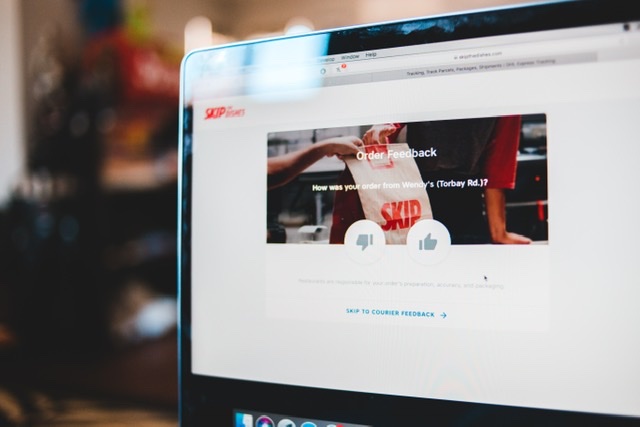Starting an online clothing store doesn’t have to be a daunting task. If you want to learn how to start an online clothing store, then this post is for you.
You want to do the right thing and avoid any mistakes. Your online clothing store is an important part of your business, and it needs to be successful.
There are several tips and steps you should take to start a successful online clothing store. These tips will help you attract the right audience and have the ability to sell products.
There is a lot of competition in the marketplace. So you need to be prepared and know what steps you need to take. This article offers helpful tips on how to start an online clothing store.
1. Choose your clothing niche
Businesses with a unique product or service to offer, have the right to their own piece of the pie. But building an online clothing business is not an easy task.
Choosing a niche is the first step in creating a successful online clothing store. There are many ways to decide on your clothing niche.
First, consider the people you want to shop from you.
- What type of clothing will appeal to them?
- How old are they?
- Are they male or female?
- Do they prefer a particular style?
Your main goal as a business owner is to build traffic and generate sales. Additionally, to collect email addresses of your potential customers and turn them into regular buyers. The best way to do that is to focus on an area you know and can relate to.
2. Be prepared to commit
Starting an online clothing business will need a lot of work and effort; the sooner you get into it, the better.
Commitment to the process is a commitment to success. Successful sellers realize that putting themselves out there takes work and they are willing to put in the effort.
The success of your online business will be determined by your commitment and dedication. You must be ready to work hard from the word go.
If you want this adventure to end up being a success, you will have to put in place a plan that will help you succeed.
3. Draw your business plan

Once you have identified the possible product and niche, it is time to decide on how you will make it a success. The next step in product design is to write your business plan.
Start out with an overview of your business. Typical information you would supply includes:
- Description and product or service provided,
- your target market,
- your location and
- resources required to do the business.
A business plan is a strategic document that can be used to communicate the details of your startup’s design and the predicted outcome.
The plan is your startup’s vision, mission, goals, and step-by-step approaches for achieving those goals. A good business plan will also provide valuable insights into future growth opportunities.
4. Select your ecommerce platform
You’ve chosen a great niche and a great product, and you’re ready to open your doors for online shoppers. But do you know what kind of e-commerce platform is best for the size and type of business you want to start?
One of the key aspects of starting a clothing store online is to select the right ecommerce platform. It will not only determine how your store looks but also decide if you’ll be able to customize the online store’s interface easily or not.
Ecommerce platforms are already designed to sell products online. Selling online is more popular than ever. With the tools available today, you can create an online store in minutes and sell millions of products worldwide.
Here are two of the top ecommerce platforms available in the market;
Shopify is one of our favorite ecommerce platforms based on flexibility, appearance, and users’ feedback.
Due to the fact that it is focused on small businesses, Shopify provides a decent variety of free and paid themes.
Bigcommerce is a great choice for entrepreneurs who are looking for an easy-to-use platform with low entry cost.
There are many ecommerce platforms out there.
Remember, your ecommerce platform is the virtual, online stage for your shop. It’s also the foundation of your business. So make sure it fits your needs and your vision well.
5. Buy a plan that is best for you
Now you have a brief idea of what your e-commerce business will do. The next step is to buy an e-commerce plan that is best for you. But to do that, it’s important for you to consider your options and weigh the advantages of each.
Buying an e-commerce plan is a big decision that should be done carefully. Its features and capabilities can determine the success of your online clothing store.
E-commerce plans come in all shapes and sizes.
The most common plans are monthly, annually or bi-yearly. It depends on your current budget and your business needs. Because one may be more efficient than another, as well as easier to use. Understand what’s in it for you.
You may start with an easy to use plan that includes lists of relevant products, package options, images, description, and more. Or you might choose a customized plan that is organized around your specific needs.
Either way, they provide the essential functions you need to manage your online sales. They also include multiple marketing tools to help you generate traffic and increase your visibility.
from within Shopify – including automatic updates to your social media accounts, shopping ads on Facebook and Google, newsletters customized for your store, and much more.
6. Choose your domain name
Once you have decided on a name you like and it is available, register the domain name. The easier your domain name is to remember the better.
Your domain name is the web address to your website. A well-chosen domain name can help your site’s success. Don’t be that person who uses “Iwanttolearnhowtostartanonlineclothingbusiness” as your domain. It’s way too long.
Your domain name is very important as it’s the name that people will associate with your business. Make sure that you choose a name that’s relevant to your business and is easy for you to remember.
7. Choose your templates and customize your store

Now that you have created your store, you need to choose your templates. The templates allow you to customize your theme and the feel of your store.
You can choose from existing templates that are already preinstalled. Also, you can create a custom one.
You can do this by changing the custom settings of the template that you want to use. Some e-commerce platforms also allow you to create a custom theme or template using code.
For more information on this, refer to the documentation of your e-commerce platform.
8. Set up a payment processor

Be sure to set up a payment processor for your e-commerce website. A payment processor is a company that provides checkout services for online shopping carts.
If you accept credit card payments, then you will need a merchant account to receive funds from credit card sales.
Most payment processors will provide you with this service. Each type of payment processor has different future requirements and limitations.
9. List your products on your store
Your product is the core focus of your online store. All set-up is done! You now have your online store up and running.
Now it’s time to get some products on your store so you can sell them. Every product can be added with each detail you need like price, weight, description and etc. Fill out all the information and pictures for each product.
While you are describing the product that you are selling, try and weave in why it is important.
Additionally, you need to make sure that you have selected an appropriate category for the product. By selecting a good category, you can increase the traffic to your store.
10. Prepare Your Social Accounts
Social accounts are a core part of any online business. It is important to make your social accounts look professional so customers can trust you.
The biggest mistake most entrepreneurs make is not preparing their social accounts before the launch of the product. Plan how you are going to use social media. Post updates and photos on a regular schedule before you have even finished your product.
Many people start with Instagram. First, because it’s fun to take pictures and share them with others before you even have a sample product in hand. But, build your social media presence wherever people flock online. Try Facebook, Twitter, Pinterest, Flickr, whatever works for you.
11. Promote and grow your brand
Your brand is important. People should be able to recognize you by name and your logo. Invest in printing up business cards to promote your clothing line.
You can also use sock tags on your socks or hang tags on your apparel as a way to spread the word about who you are. Don’t forget social media sites too.
One thing remains true about the online world – if you don’t promote or publicize your business, no one will ever know that it exists. This is why promoting your brand is so important. If you are not getting customers to your store, they won’t be able to see how great your products are.
Conclusion
As an online clothing store owner, you are opening the door to a whole new world of possibilities.
By following these helpful tips, you will be well on your way to establishing a profitable online clothing business. This will allow you to reach out far beyond your current neighborhood and let everyone see your goods.
Remember, there are plenty of options when it comes to starting an online clothing business. It is important that you do your research first though, and find out what exactly works in the industry.